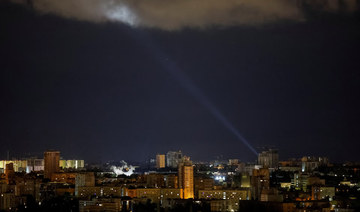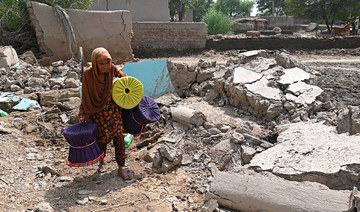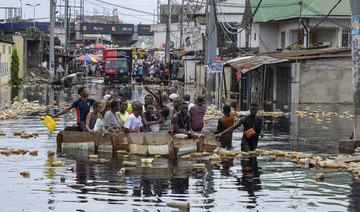WASHINGTON: The US on Thursday imposed sanctions on Iran's nuclear entity and its top official, the Treasury Department said, but sources said it will allow Russian, Chinese and European firms to continue work at Iranian nuclear sites to make it harder for that country to develop a nuclear weapon.
The Trump administration, which in 2018 pulled out of the 2015 Iran nuclear deal and reimposed sanctions on Iran, will let the work go forward by issuing waivers to sanctions that bar non-US firms from dealing with the Atomic Energy Organization of Iran, the sources said on condition of anonymity.
The waivers’ renewal for 60 days will allow nonproliferation work to continue at the Arak heavy-water research reactor, the Bushehr nuclear power plant, the Tehran Research Reactor and other nuclear cooperation initiatives.
"There was a difference of opinion between the US Treasury and State Department. The Treasury won," said a Western diplomat familiar with the issue. "There is an appetite for more sanctions, so this was a surprise; but others argue that these waivers are vital to ensure nonproliferation."
A US official confirmed the waivers.
Ali Akbar Salehi, head of the Atomic Energy Organization of Iran, and the organization itself have been placed under US sanctions, according to the Treasury's website.
The US special representative for Iran, Brian Hook, is scheduled to hold a news briefing on Thursday afternoon, the State Department said. He is expected to talk about the waivers and fresh sanctions.
Washington in November terminated the sanctions waiver related to Iran’s Fordow nuclear plant after Tehran resumed uranium enrichment at the underground site.
There had been a great deal of lobbying in Washington to stop the latest waivers as President Donald Trump seeks to exert more pressure on Iran. It was not immediately clear why Washington had decided to extend the waivers.
Under the 2015 deal between Iran and six world powers - Britain, China, France, Germany, Russia and the United States - Tehran agreed to limit its nuclear program in return for the lifting of economic sanctions that had crippled its economy.
Trump unilaterally abandoned the deal in May 2018, and reimposed U.S. sanctions in a “maximum pressure” campaign designed to force Iran to return to the negotiating table.
The decision to sanction Salehi and the Atomic Energy Organization of Iran would have an impact on Iran's nuclear civilian program because it has operational control over the program, including purchasing parts for nuclear facilities.
The diplomat said the US had likely opted to extend the Bushehr waiver because the Russian company targeted also provides nuclear fuel to US facilities, causing a potential sanctions headache for the administration.
























